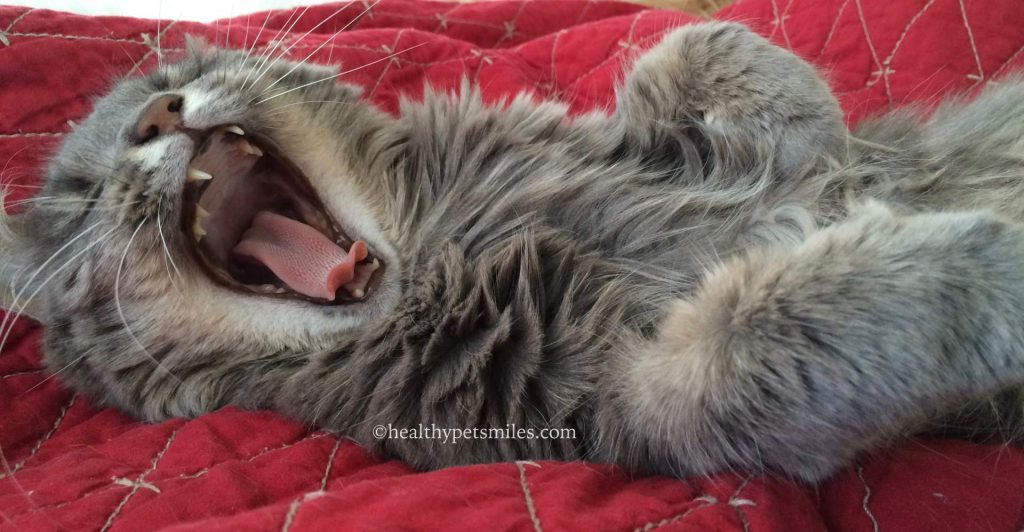What does it mean if my dog or cat has bad breath?
There can be many causes of bad breath (halitosis), including GI disease, kidney disease, and lung disease, but the most common cause is poor oral hygiene. When plaque bacteria build-up on the teeth, they break down food particles and produce smelly sulfur compounds. Further, when gum (periodontal) disease is left unchecked and these bacteria gain access under the gums (periodontal pockets), the odor gets exponentially worse. For that reason, significant halitosis can mean that your pet is suffering from advanced periodontal disease. The best way to determine the cause of bad breath is to visit your veterinarian and have a physical examination done.
What’s the best way to treat bad breath?
If the bad breath is caused by gum disease, the first thing to do is to have a professional oral examination and cleaning performed under anesthesia. It is essential that dental x-rays are performed along with a thorough examination to evaluate for pockets of disease that may not be visible on an awake examination. If these pockets are not properly eliminated/treated, then the bad breath will continue after the cleaning.

After your dog/cat’s mouth has been treated and all plaque and calculus have been removed, you can start home-care to ensure that the mouth stays happy and healthy. See our article on home-care to make sure that you are doing everything you can to keep those pearly whites smelling good!
